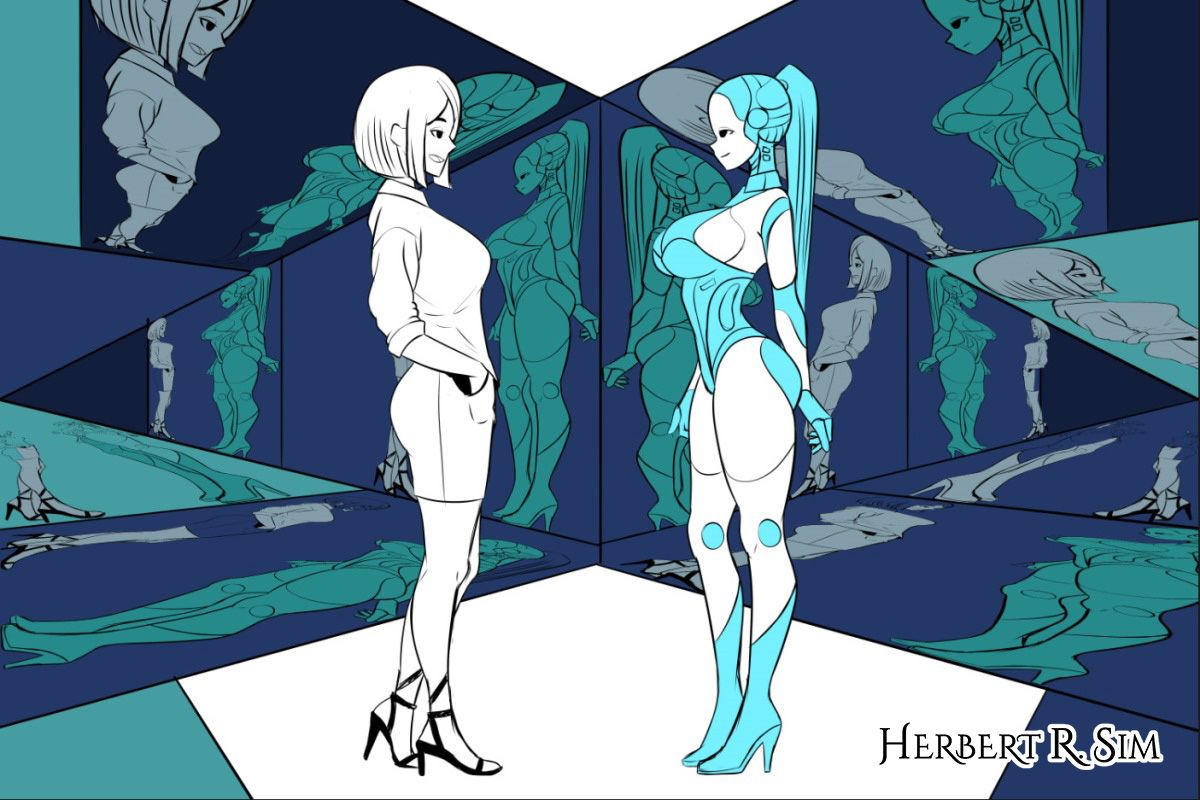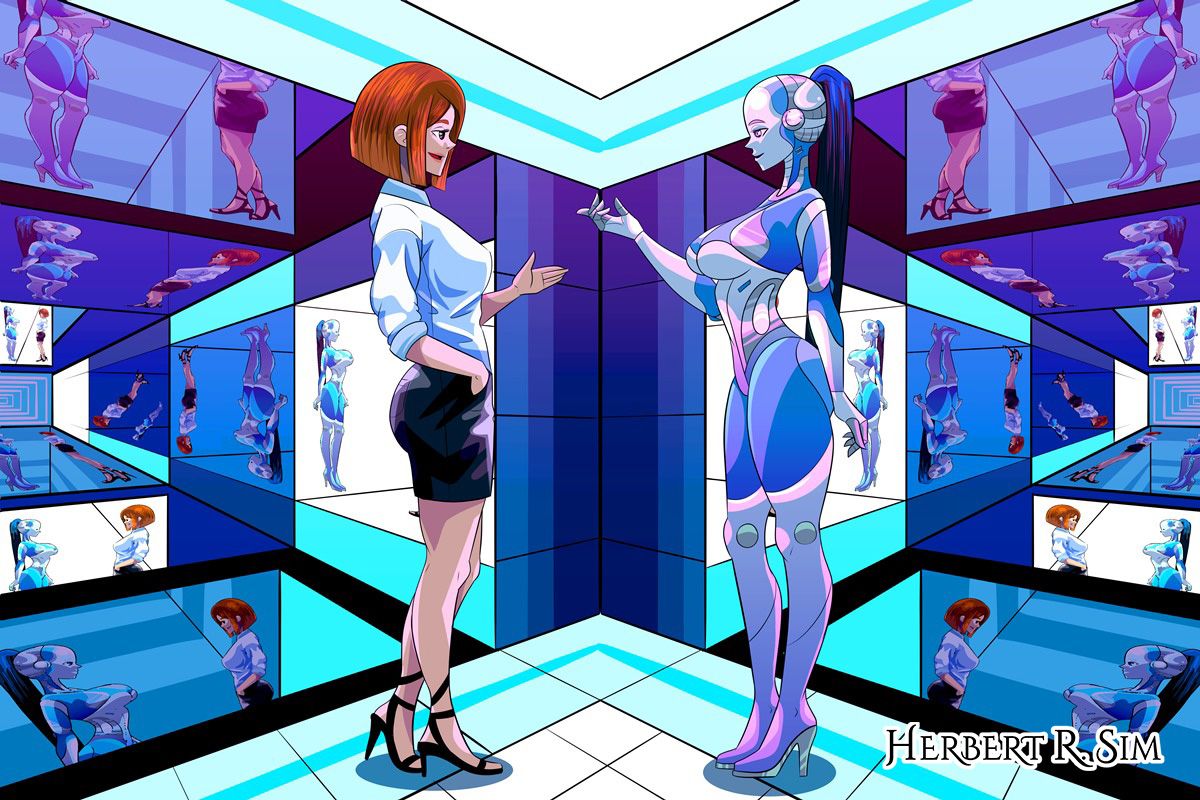
My illustration sketch of Artificial Intelligence chat software on the hardware humanoid robotics, interacting with a human.
————————————————————
The field of Artificial Intelligence, or AI, has seen multiple breakthroughs in the last couple of years, with various big tech firms such as Meta and Google pouring vast sums of money into AI research.
Yet, it wasn’t until OpenAI – co-founded by Elon Musk and other prominent figures such as Palantir Technologies co-founder, Peter Thiel – captured the world’s imagination with the release of ChatGPT, an AI-powered chatbot. ChatGPT actually belongs to a new iteration of software called generative AI, which reflects its ability to create works of their own by drawing on previously identified patterns within a vast ocean of existing content. The extremely versatile automated chat generation system relit conversations about AI’s place within our daily lives and through various social media platforms, showcased what it could really do – simply and effectively.
In fact, ChatGPT wasn’t even the first chatbot or the most advanced software to be released. For one, Meta’s Blenderbot and its own AI team’s Galactica projects launched and struggled to impress, this as other big tech firms continue to jostle to be the leader in the AI race. Microsoft, for example, has upped the ante by investing a further $10 billion into OpenAI, having contributed $1 billion when the latter was first set up as a for-profit subsidiary in 2019.
China’s largest search engine company Baidu Inc., plans to debut a ChatGPT-style application in March 2023 next month, initially embedding it into its main search services.
Things are heating up.
Rising against stiff competition
To put it into context, ChatGPT had managed to clock 10 million users in two months upon its launch, a number that Instagram had managed to garner in a year. While the smart conversations and the user-friendly interface of ChatGPT contribute to an engaging experience, the AI community remains baffled by the program’s still burgeoning popularity.
ChatGPT’s prominence fits in nicely with the brewing narrative that AI is getting normalised more than ever before. There has been an increasing interest by various big tech companies as well as independent outfits, to explore methods and ways to integrate AI projects within aspects such as healthcare. Specifically, such software technologies can be woven into the development of hardware technologies such as neurochips, which are essentially minute devices that can be implanted within the human brain. Each neurochip is designed to trigger and initiate positive reactions within the human body – such as improving certain health conditions – and to even improve how we communicate with one another.
In fact, AI software present in neurochips could potentially aid people with speech or communication disorders, to help express themselves better and to be able to communicate more effectively. Having excellent communication skills can improve one’s quality of life, in the process adding the sense of independence and autonomy. Better yet, neurochips can be powerful enough to enable us to communicate with others in real-time, surpassing language barriers and other obstacles.
Arguably, the term ‘walking encyclopaedia’ could very much apply to people who use neurochips. Integrating ChatGPT or other AI software for example, would also serve to enhance human memory and one’s ability to learn. Such an integration could also greatly help people to remember and recall information more effectively.
————————————————————

Revising from the earlier sketch, enhancing on the artistic creative element to create an inception effect with multi-dimensional mirrors – A reality within another reality.
————————————————————
Of uses cases and neurochips
Disregarding the fact that AI-powered neurochips could fall into the wrong hands for the wrong reasons, the technology itself delivers a positive breakthrough for not just the scientific community, but also various facets of modern society – including education. For example, information retention is no longer a huge speed bump when one is implanted with the neurochip, making university courses such as medicine and law – which are traditionally information-intensive – that bit more manageable.
ChatGPT-equipped neurochips could also potentially improve our overall well-being, regardless whether it’s physical, mental or emotional. For example, AI algorithms could be utilised to monitor and manage stress levels, guarding against the onset of mental health conditions such as anxiety. While studies have been conducted to explore the use of AI within the field of therapy and counselling, pairing AI with neurochips would help accelerate such a development.
Better yet, ChatGPT is being developed to deliver real-time support and guidance for individuals who are struggling with addiction as well as other behavioral health issues. In the scenario where users are living in remote areas, ChatGPT provides an alternative avenue for people to seek help, as well as greatly improve access to useful medical resources.
Even in the medical field, AI-infused neurochips could be used to help monitor for signs of disease or illness, and provide real-time support and guidance, especially for patients who require urgent medical attention. Furthermore, neurochips could be used to manoeuvre prosthetic limbs or assistive devices, a.k.a. neuroprosthetics, making them more intuitive and responsive to the user’s needs.
Strategic output
In the case of developing neurochips that incorporate AI or potentially, ChatGPT software, Elon Musk, too, shares a keen interest. His brain chip firm Neuralink is said to be on course to begin human trials soon – a huge step in the sphere of neurochip technology. For one, Neuralink is reportedly in the process of developing brain chip interfaces that could restore a person’s vision and even full body functionality, including movement and verbal communication.
With the increasing normalisation of AI – fanned by ChatGPT’s surging popularity – the integration of ChatGPT and AI into neurochips is a significant step towards enhancing human abilities and improving our quality of life. Even in the gaming sphere, mobile games such as Replika: My AI Friend has tapped AI to create a human robot companionship for users. Slowly but surely, AI is here to stay.
From improving communication abilities and enhancing memory, to promoting overall well-being and delivering medical applications, AI possesses the potential to deliver a profound impact. While potential ethical and privacy concerns exist and would, in due time, get addressed, AI’s resurgence could well be a one-way ticket that solidifies its implementation and incorporation into our very existence.
————————————————————

